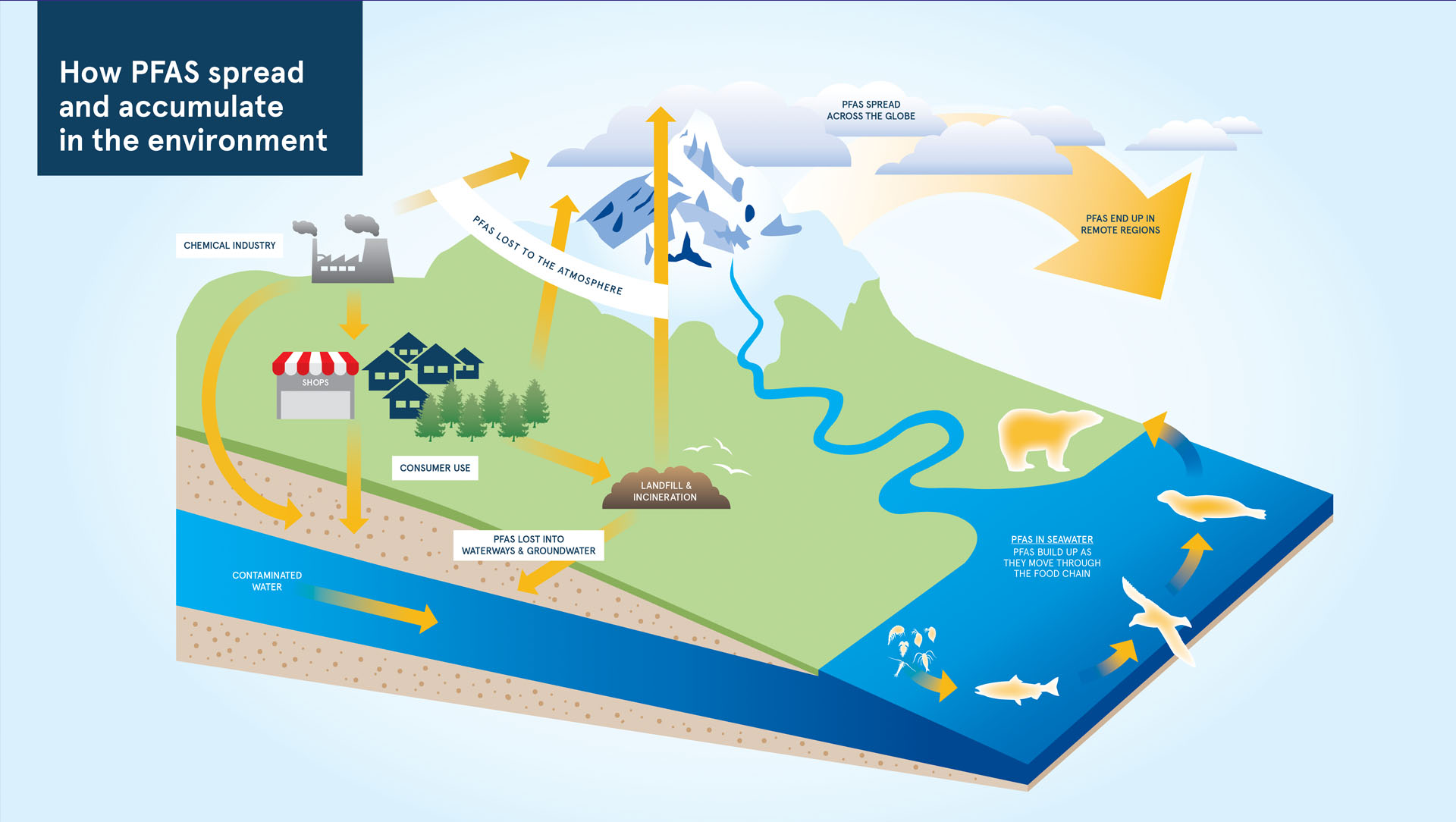Ending the use of ‘Forever Chemicals’
PFAS, the ‘Forever Chemicals’, are a group of industrial chemicals that are polluting our air, soil and water worldwide. They build up through food chains, causing long-term damage to wildlife, and are extremely persistent. It can take thousands of years for PFAS to breakdown in the environment, meaning the pollution we cause today will last for generations to come.

THE
PROBLEM
PFAS are some of the world’s most persistent chemicals, creating a pollution problem that can last for thousands of years.
Many PFAS are toxic to both humans and wildlife, with impacts ranging from hormone disruption to cancer and reduced immunity.
PFAS continue to be added, often unnecessarily, to a huge variety of everyday products from carpets to clothing and cosmetics, even disposable food packaging.
The
Solution
There is a growing number of companies taking voluntary steps to reduce PFAS in their products, supermarkets and fast-food chains are increasingly removing PFAS from their food packaging.
Voluntary action is only the start, legislative restrictions are needed to eliminate all unnecessary uses of PFAS. For example, banning PFAS being added to food packaging, as alternatives already exist.
There are some places that PFAS currently plays an important role, for example in some medical equipment or clean energy production. We now need clear strategies to drive innovation to eradicate these remaining uses.
WHAT
CAN I DO
Test your own food packaging for PFAS. With nothing more than some olive oil, a pen and some food packaging you can help us build a global picture of PFAS use that will help us call for change.
Opt for PFASfree retailers. Visit our website to find out where PFAS are used, and when it’s time to replace your items, make sure you look for companies offering PFASfree alternatives.
Find out more:



